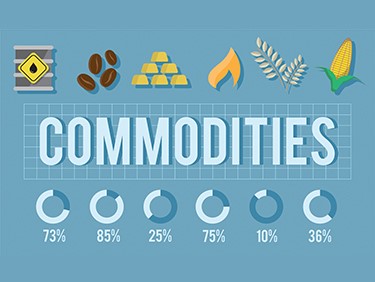-
In its latest report, HC Brokerage shed the light on the cement industry in Egypt, specifically on Arabian Cement Company (ACC) where they reiterated OW on a substantial upside potential
- Government finally imposes local sales quota to balance supply/demand; retail price should theoretically correct to over EGP1,200/ton, albeit gradually, benefiting all players
- Arabian Cement should see its earnings multiply to unprecedented levels, despite the slightly lower implied utilization rate
- We more than double our 2021–24e EBITDA estimates and our TP to EGP15.0/share and reiterate OW on a substantial upside potential
Mariam Ramadan, Head of Industrials at HC commented that: “The introduction of quotas shakes up market shares but should significantly improve pricing environment for all: Under the formula proposed, each cement maker would cut production capacity by a base amount of 10.69%, an additional 2.81% per production line, besides an asset age factor, effective 15 July. We estimate this could shave off around 24m tpa (or c32%) of clinker capacity off the map, leaving effective capacity at 50m tpa, in line with pre-COVID-19 consumption levels, leaving all players potentially utilizing their full rebased capacity/quota allocated. While the imposed quota will result in a redistribution of sales volume, with gains for some and losses for others, the consequent higher price should comfortably translate into improved earnings for all. We estimate a theoretical ex-factory price floor of EGP1,000–1,200/ton based on the marginal cost producer’s all-in breakeven point, which is broadly in line with management’s expectation. Nevertheless, we only assume a gradual closing of the gap between actual prices and the marginal cost of production, as the market psychologically adjusts to the considerable hike and as inventories run down. We also factor in the normalization of coal/petcoke prices and freight rates, all translating to a terminal realized price of EGP1,000/ton for local sales. That said, however, a long-term equilibrium price should, besides fully covering fixed and variable costs, allow for debt servicing, recouping years of accumulated losses, and generate a positive return to shareholders, which should provide further upside.”
“Export market dynamics little changed despite the excess volume: On our calculations, all players who netted production cuts (and therefore face an increase in excess volumes) are already exporters. Assuming no significant change in their cost efficiency (and hence ability to export) following the cuts suggests an increase in volumes that need offloading in export markets, where margins are already very slim. We expect Arabian Cement’s export contribution margin to remain positive at the new utilization rate and anticipate it will retain its competitive edge in export markets as it remains among the most cost-efficient players with an extensive and diversified market reach (spanning from Sub-Saharan Africa to the US). We assume little change in the company’s export volumes (market share aside) but now factor in clinker exports as well (at slightly higher margins versus cement). This leaves the company’s cement utilization rate at 80%, down from its average historical mid-80%s (pre-line one’s outage last year), and its clinker capacity utilization nearly unchanged, with total exports making up c10% of sales.” Added Mariam Ramadan
“Many key considerations remain unresolved, constituting both upside and downside risks: On the downside, the government has only specified a one-year validity initially, but we assume an extension until natural supply/demand balance is achieved, with the cuts to merely oscillate with potential demand step-ups until then. Also, naturally, allowing imports would defy the logic of the intervention. Still, there has been no word on an import ban, while importing could now become lucrative (judging by prices in Turkey and the GCC). On the upside, divisibility remains key, with some producers potentially opting to idle their less efficient line (s) as the threshold of operating all profitably is higher than implied by their allocated quota. If this does not change the marginal cost producer’s breakeven point, it could translate to a higher effective supply cut and higher prices. Additionally, the kickoff of reconstruction in Libya and Iraq provides real upside to our export assumptions (prices and volumes), the signs of which already started to show.” Mariam Ramadan continued
“Back to 2015 market dynamics; reiterate OW on compelling valuation: Our new assumptions see EBITDA multiplying to an all-time high of EGP1.26bn next year from EGP183m in FY20, with our 2021–24e estimates standing some c140% higher, on average, than our previous forecasts. This implies an EV/ton of USD78, still substantially below the replacement cost of at least USD130/ton, and a target price of EGP15.0/share. This level is comfortably below its all-time high of EGP18.0/share before the announcement of the new 12m tpa Wataniya plant and the new cement licenses; dynamics that were very similar to where this development takes us. Between then and now, however, the EGP devaluation also took place while the USD-based cost curve shifted downward on the exit of a couple of players and conversions to coal and petcoke. Ultimately, Arabian Cement’s cost advantage versus the marginal producer (and hence selling price potential) widened significantly, resulting in higher future operating cash margins, while its debt and other liabilities shrank and its cost of capital decreased. Therefore, we see the said share price rerating as only reasonable. Our new target price puts the company at FY22e EV/EBITDA of 4.9x (trading at 2.0x) and P/E of 7.6x (trading at 2.7x) and implies a potential return of 182% on the 6 July closing price of EGP5.32/share. Therefore, we reiterate our Overweight rating.” Mariam Ramadan concluded










